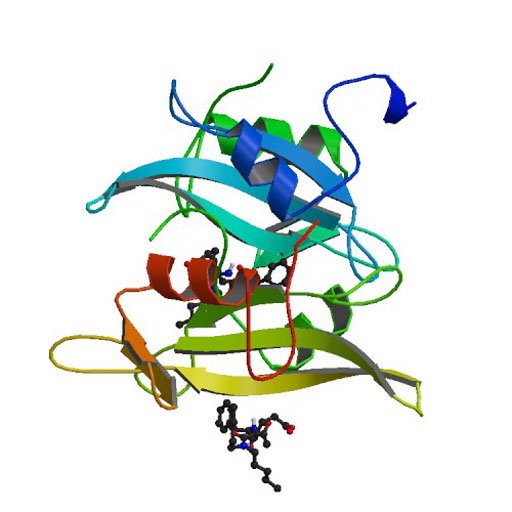Controlling the Transient Activation of Protein Kinases in Living Cells
By LabMedica International staff writers
Posted on 27 Dec 2016
The study of the effects of protein kinase enzymes in living cells has been enhanced by the development of a technique to control when and for how long a specific kinase is active.Posted on 27 Dec 2016
Protein kinases, which transfer phosphate from the energy molecule ATP to other enzymes and proteins, are involved in almost every biological process. While significant progress has been made in defining the role of many kinases, understanding how specific kinases orchestrate complex signaling events remains challenging.

Image: The molecular model of tyrosine kinase c-Src (Src) (Photo courtesy of Wikimedia Commons).
Investigators at the University of Illinois, Chicago (USA) have described a method to control the timing and the duration of kinase activity. This system provides the ability to mimic physiologically relevant transient activation of a kinase.
They reported in the December 12, 2016, online edition of the journal Proceedings of the [U.S.] National Academy of Sciences that by using two protein-engineering approaches, they could achieve independent control of kinase activation and inactivation. They demonstrated successful regulation of tyrosine kinase c-Src (Src) and Ser/Thr kinase p38alpha (p38), demonstrating the broad applicability of the method. By using this approach, they identified morphological changes induced by transient activation of Src and demonstrated the role of sequential Src-PI3K (Phosphoinositide 3-kinase) and Src-Rac1 (Ras-related C3 botulinum toxin substrate 1) signaling in regulation of cell morphology.
"Previously, we had the ability to artificially turn on a kinase, but we did not know how to turn it off," said senior author Dr. Andrei Karginov, assistant professor of pharmacology in the University of Illinois, Chicago. "So what we could see was only the result of that kinase being on for a long time. But, in living cells, kinases are often turned only for a set period of time, and the duration of this activation often dictates what will happen to the cell. To mimic this transient action we had come up with a new strategy."
Related Links:
University of Illinois, Chicago













